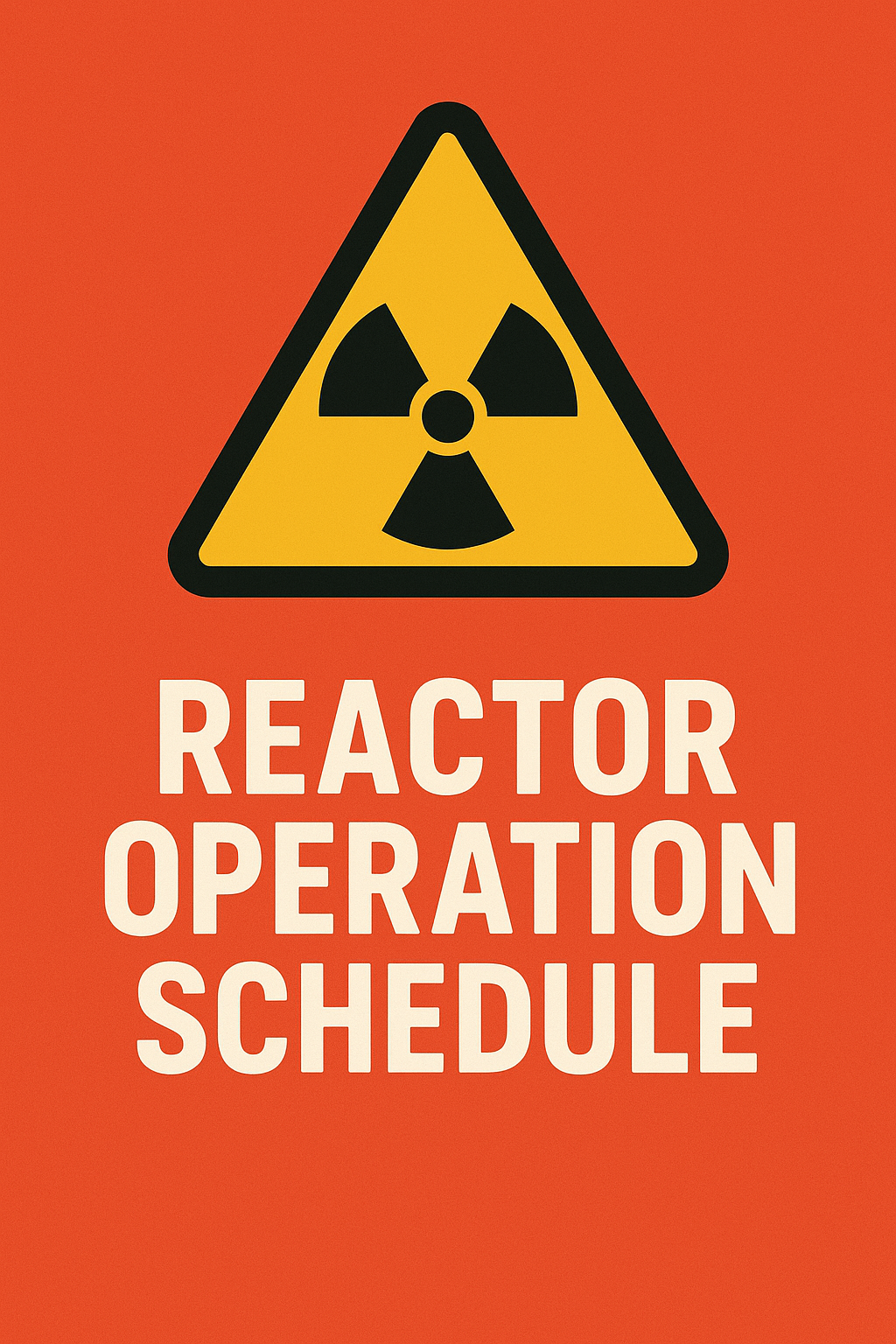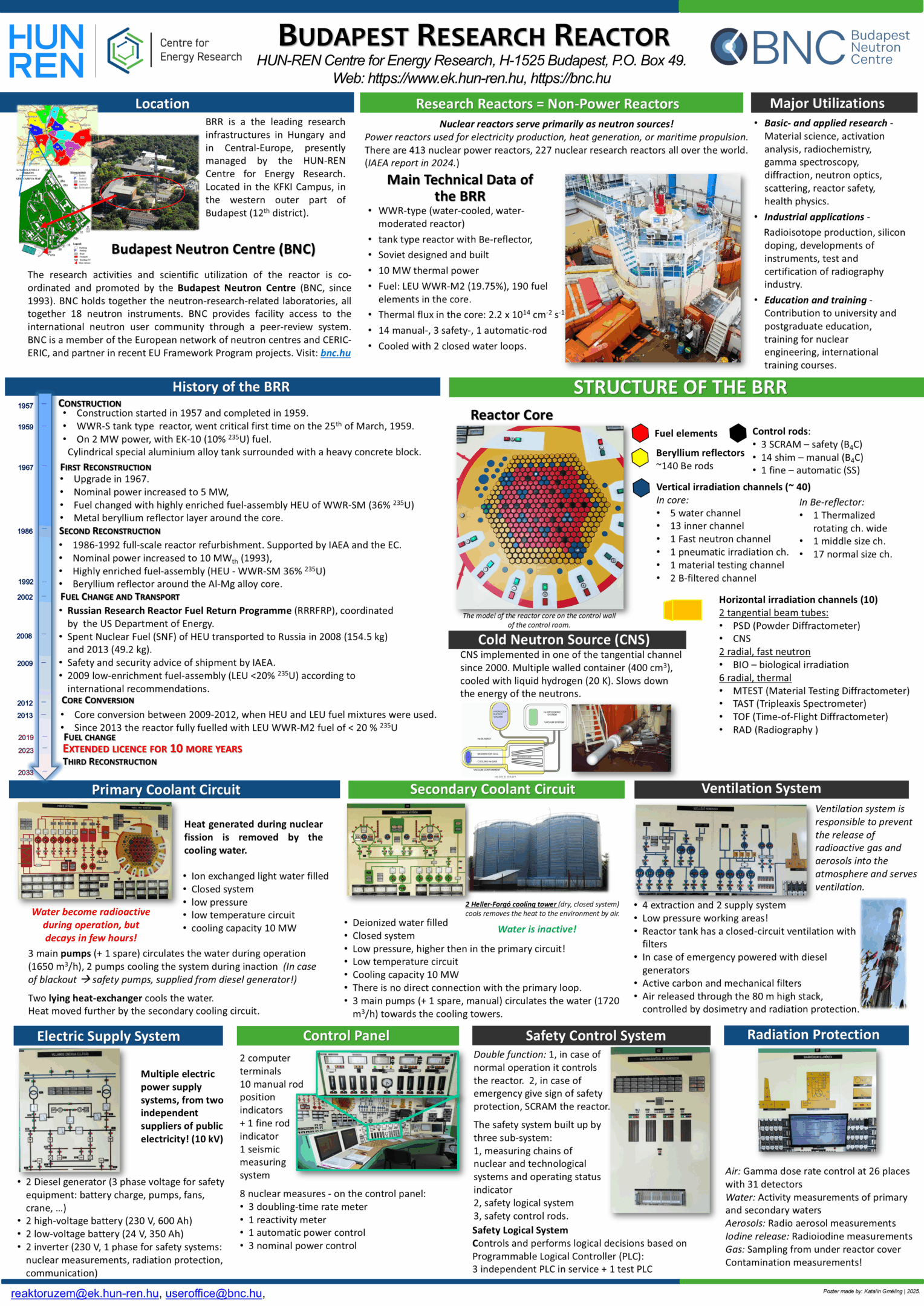The Budapest Research Reactor (BRR) is a VVR-type (water-cooled, water-moderated) Soviet design reactor. It went critical in 1959. The initial thermal power was 2 MW. The first upgrade took place in 1967 when the power was increased to 5 MW using a new type of fuel and a beryllium reflector. A full-scale reactor reconstruction and upgrade project started in 1986, and finished in December 1992. The upgraded 10 MW reactor received the operation license in November 1993. According to Hungarian Atomic Energy Authority (OAH) regulations, a periodic safety review must be performed in every 10 years. To maintain the operational license, such reviews were conducted in 2003, 2013 and 2023. The OAH has extended the operating license of the BRR until 2033.
As part of the Russian Research Reactor Fuel Return program (RRRFR), high-enriched uranium fuel elements (36% uranium-235) of the BRR were returned to Russia. During this period, continuous zone conversion took place to replace high-enriched uranium fuel with low-enriched uranium fuel (19.7% U-235) between 2009 and 2012. Since 2012, the research reactor has been operating with low-enriched uranium fuel, at a nominal power of 10 MW.
Main technical data
| Reactor type: | Light-water cooled and moderated tank-type reactor with beryllium reflector |
| Fuel: | VVR-SM(-M2) from November 2012. 190 fuel assemblies with less than 20 % 235U initial enrichment |
| Core geometry: | Hexagonal (height: 600 mm; diameter: 1000 mm) |
| Equilibrium core: | 190 fuel assemblies (in single equivalent) |
| Control: | • 3 safety rods (B4C); • 14 shim rods (B4C); • 1 automatic (fine) rod (SS) |
| Nominal thermal power: | 10 MW |
| Neutron flux density in the core: | • 2.5 * 1014 n/cm2s (thermal in the flux trap) • 1 * 1014 n/cm2s (approx. max. fast flux in the fast channel) |
Public Relations
The reactor is open for the public. Groups of visitors are welcome monthly (on the last Friday of the month). Special appointments are possible. Guided technical tours are frequently organized for the international nuclear community on the occasion of conferences and symposia held in Budapest or in the region.
*The reactor schedule can be announced publicly; it is not classified national information. Its disclosure does not violate any national security interests, nor is it a trade secret. Its disclosure does not violate the business interests of HUN-REN EK.

